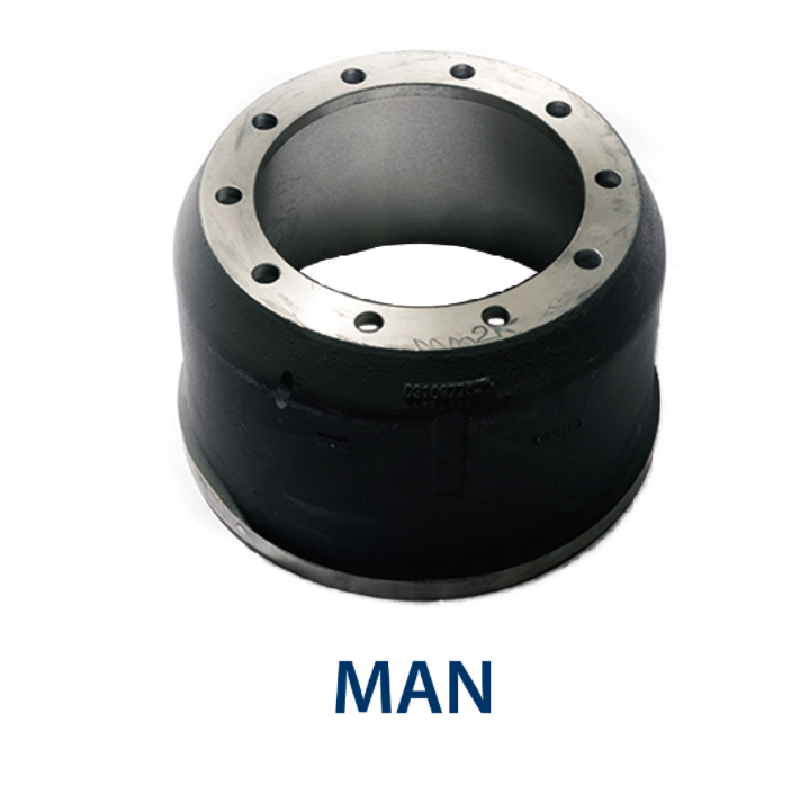Dec . 11, 2024 09:58 Back to list
Exploring Materials Used in Brake Drum Manufacturing and Their Performance Characteristics
Understanding Brake Drum Materials A Comprehensive Guide
Brake drums are an integral part of a vehicle’s braking system, particularly in drum brake designs that are commonly used in many cars and trucks. The effectiveness, durability, and efficiency of brake drums are significantly influenced by the material used in their construction. This article delves into the different types of materials used for brake drums, their properties, and the advantages and disadvantages of each.
Common Brake Drum Materials
1. Cast Iron Cast iron is the most common material used for brake drums. Known for its excellent thermal conductivity, cast iron helps to dissipate heat generated during braking. This property is vital because overheating can lead to brake fade, reducing braking effectiveness. Cast iron drums are also quite durable and can withstand the high stresses experienced during braking. However, they tend to be heavier than other materials, which can affect a vehicle's overall weight and performance.
2. Aluminum In recent years, aluminum has become an increasingly popular choice for brake drums. Aluminum drums are significantly lighter than cast iron ones, which helps improve vehicle handling and fuel efficiency. Additionally, aluminum has good thermal conductivity, allowing for effective heat dissipation. However, aluminum’s lower tensile strength compared to cast iron can be a disadvantage, especially for heavy-duty applications. It may also wear out faster under extreme conditions, making it less suitable for vehicles that frequently engage in heavy towing or off-road driving.
3. Composite Materials The introduction of composite materials in brake drum manufacturing marks a significant advancement in automotive technology. These materials often comprise a mixture of metals, ceramics, and other materials, offering a compelling balance of strength, light weight, and thermal properties. Composite drums can withstand higher temperatures and provide improved performance in terms of brake responsiveness and longevity. However, the cost of manufacturing composite materials can be higher, and they may not be as widely available as traditional materials.
4. Carbon-Carbon Composites In high-performance and racing applications, carbon-carbon composites are sometimes used due to their remarkable ability to withstand extreme temperatures and resist wear. These materials are lightweight and offer outstanding braking performance, particularly in conditions where standard materials would fail. However, their high cost and specialized manufacturing processes limit their use to professional-grade applications, making them impractical for everyday vehicles.
brake drum material

Factors Influencing Material Choice
The choice of material for brake drums is influenced by various factors, including the intended use of the vehicle, cost considerations, and performance requirements. For instance, heavy-duty trucks transporting large loads would typically require robust cast iron drums to ensure durability and reliability under intense braking conditions. In contrast, lightweight sports cars may benefit from aluminum or composite materials, which offer improved performance without compromising safety.
Performance and Safety Considerations
Regardless of the material used, the performance of brake drums is critical to vehicle safety. Over time, wear and tear can lead to issues such as warping, cracking, or thinning of the drums. Regular inspections and maintenance are essential to ensure that brake drums remain in optimal condition. It’s also important to pair the right drum material with suitable brake pads to achieve the desired braking performance. Mismatched components can lead to inefficient braking and may cause premature wear.
Conclusion
In summary, the material used for brake drums plays a crucial role in a vehicle’s overall performance and safety. While cast iron remains the most widely used material due to its durability and thermal properties, alternatives like aluminum and composite materials are gaining traction, especially in specialized applications. As automotive technology evolves, we can expect further innovations in brake drum materials that enhance safety, reduce weight, and improve braking performance across various vehicle types. For consumers, understanding these materials can help make informed decisions about vehicle maintenance and upgrades, ultimately leading to safer and more efficient driving experiences.
-
Durable Brake Drum MAZ for Heavy Duty Trucks | High Performance
NewsAug.26,2025
-
FUWA: Premium Quality, Reliable Performance & Innovative Solutions
NewsAug.25,2025
-
Liza Brake Drum: Superior Quality & Performance for Safe Driving
NewsAug.24,2025
-
Iveco Brake Drum | Premium OE Quality for Daily & Eurocargo
NewsAug.22,2025
-
Your Brake Drum Man: Quality & Performance Parts
NewsAug.21,2025
-
Explore Japan: Ultimate Travel Guide & Authentic Experiences
NewsAug.19,2025
